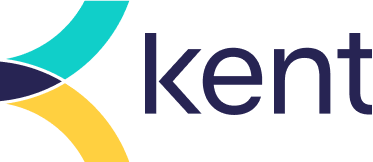Thriving on Emotional Agility: Lessons from the Field in Romania

At Kent, emotional agility isn’t just a buzzword, it’s how we work. It means adapting quickly, leading with empathy, and uniting diverse teams, even in high-stakes, fast-moving environments.
I recently had the opportunity to work on a facility audit study for a client in Romania - a hands-on experience that brought all these principles to life in real time.
This article shares some real-world moments where emotional agility helped us create not just technical success, but stronger partnerships and more resilient teams.
Flexibility in Action: Adapting with Purpose
Projects aren’t always straightforward. Even with the best planning, things shift; timelines move, client needs evolve, site conditions change. However, through it all, safety and delivery have to stay front and centre.
At Kent, we’re fanatical about performance, and flexibility is one of the qualities that defines us best. It’s what helps us deliver on time and in full. On this project in Romania, that flexibility wasn’t just helpful. It was essential
When the client confirmed their availability just a week after project kick-off, we moved fast; adjusting travel plans, reassigning tasks, and mobilising a field team without delay. Once on the ground, no two days were the same. Shifting weather, evolving client availability, plant activities, and new insights from the visit all meant we had to stay agile. We adapted in real time: re-prioritising activities, redistributing roles, and keeping our focus on what mattered most. That kind of flexibility didn’t just help us stay on track, it allowed us to deliver meaningful, actionable insights that shaped the next phase of the project.
Safety as a Constant
Agility is not about compromising on the essentials. Safety is always at the top of that list.
Despite the fast mobilisation, every team member was fully briefed on both Kent and client protocols. We ran site-specific and on-the-job risk assessments, ensured PPE compliance, implemented buddy systems for non-native speakers, and assessed any safety adjustments required by changes in plans or conditions.
We empowered everyone, especially junior staff, to speak up, pause, or stop work if something didn’t feel right. That kind of psychological safety is a cornerstone of our culture.
Empowering the Next Generation
Live environments are some of the best classrooms, but only when structured correctly. And of course, the energy transition is increasingly being shaped by the hands of younger generations, who must be prepared to lead with confidence, adaptability, and a deep understanding of both technical and human dynamics.
On this project, we paired junior engineers with seasoned professionals to provide mentorship and oversight as their responsibility gradually increased.
After a session with a senior engineer to model the work, our early-career engineer led the desktop data review versus field, walking lines under the scorching heat, taking key measurements, and marking up P&IDs and isometrics – all while keeping safe and asking probing questions of the operators.
This rite of passage brought home to him the sheer size of the equipment he’d previously only experienced on a P&ID or datasheet. It also allowed us to check, through spot checks, that we had a solid basis to pursue the work. And it allowed him to shine by using his judgement to flag critical differences that needed adjustment in the study plan.
This mix of guided experience and earned autonomy helped build confidence while supporting a culture of ownership and mutual respect.
Bridging Cultures with Curiosity
Working across borders brings complexity, but it also opens the door to connection. On site in Romania, we leaned into those moments; learning a few key phrases to return the effort our local colleagues made in speaking English, and sharing meals that told a story of the place and its people.
One afternoon, we were offered ciorbă de burtă; a traditional soup made with beef tripe and red pepper. I’ll admit, I was hesitant at first. But curiosity got the better of me, and I’m glad it did; it was unexpectedly delicious, and sparked conversations we might not have had otherwise. With support from bilingual client partners, we kept the dialogue flowing, making sure everyone felt understood.
That spirit of openness helped us build real trust, not just for the visit, but for the partnership ahead.
Team Resilience at Its Best
This project reminded us that operational excellence is driven by people, not just process.
Trust, optimism, and adaptability shaped everything: how we dealt with unexpected changes, how we communicated under pressure, and how we delivered results in partnership, not just in parallel, with our client.
In the end, we didn’t just complete a successful site engagement. And for me, it was an opportunity to once again witness how at Kent, we thrive through operational excellence.
By using our website you consent to all cookies in accordance with our Privacy Policy.










